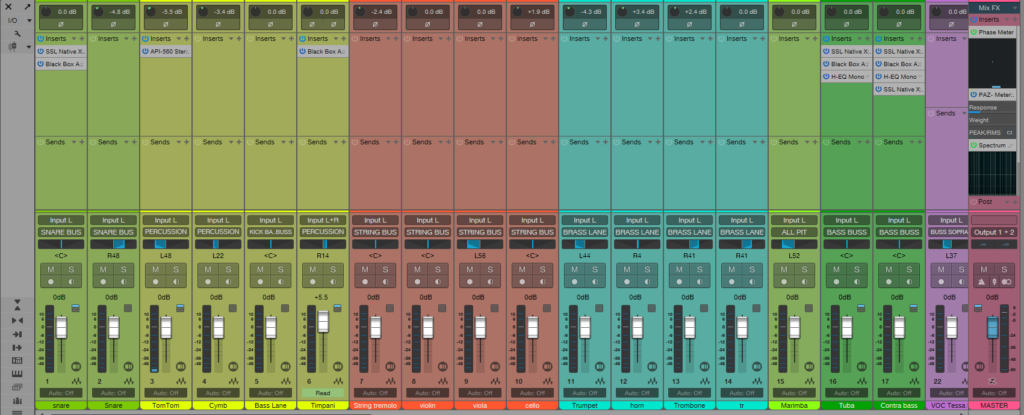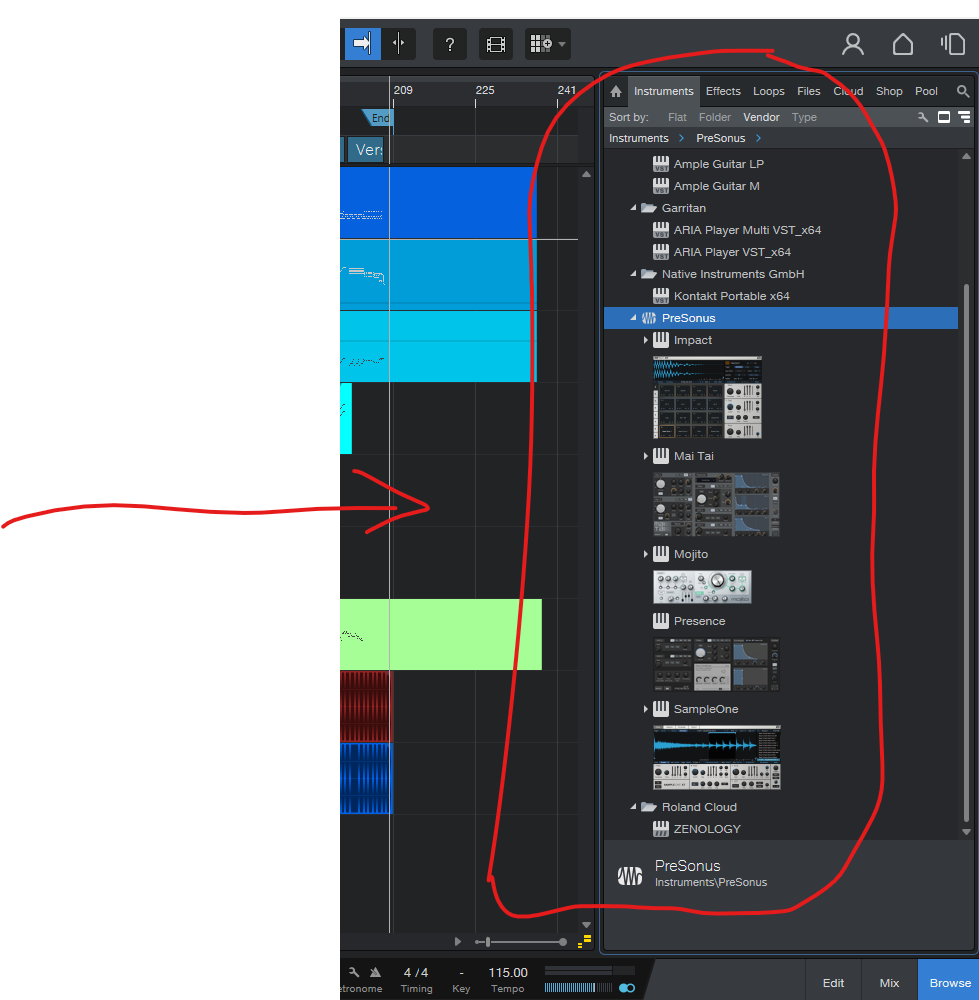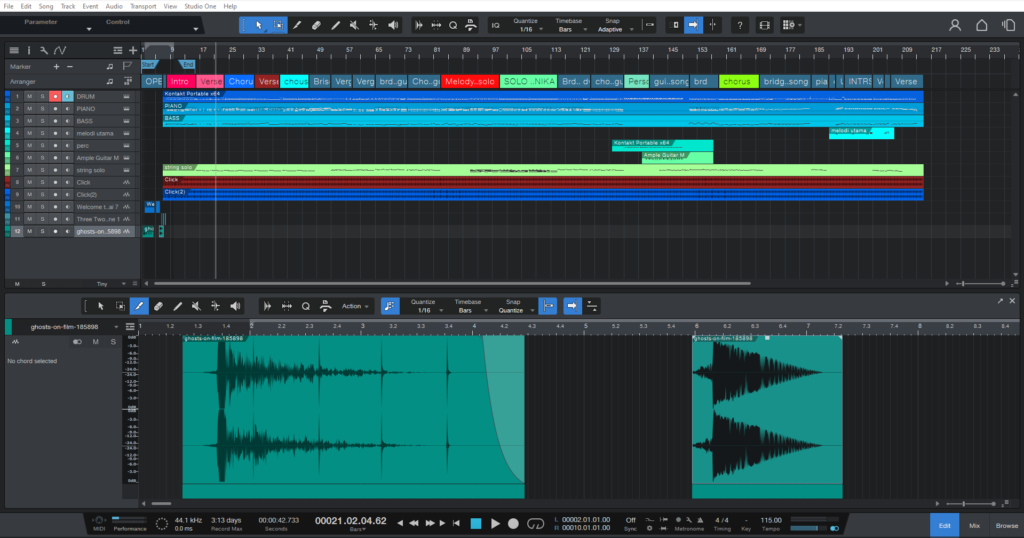As a professional composer and music enthusiast, navigating the intricate world of Digital Audio Workstations (DAWs) is essential for unleashing your creative potential. Among the plethora of options available, Studio One has emerged as a powerhouse, offering a blend of intuitive design, advanced features, and unparalleled performance. Developed by PreSonus, Studio One has become a go-to choice for musicians, producers, and audio engineers seeking a versatile and user-friendly platform for music production. In this comprehensive guide, we’ll delve into the depths of Studio One, demystifying its interface and features to help you navigate with confidence and unlock its full potential.
Unveiling the Interface: A Tour of Studio One
1. Single-Window Interface
Studio One’s single-window interface is a hallmark feature that sets it apart from other DAWs. This unified workspace provides easy access to all essential tools and functions, streamlining the production process and enhancing workflow efficiency. From recording and editing to mixing and mastering, everything you need is within reach, eliminating the need to switch between multiple windows and menus.
2. Arrange View
The Arrange view serves as the central hub of your production, allowing you to arrange and edit audio and MIDI tracks with ease. Here, you can manipulate audio clips, MIDI data, and virtual instruments, as well as arrange your composition into a cohesive structure.
3. Mixer View
The Mixer view provides comprehensive control over your mix, allowing you to adjust levels, pan positions, and effects sends for each track in your project. Studio One’s Mixer offers a range of features, including channel strips, bus routing, and real-time metering, to help you achieve a professional-sounding mix.

4. Browser and Inspector
The Browser and Inspector panels offer convenient access to your project’s files, plugins, and settings. The Browser allows you to browse and import audio files, virtual instruments, and effects plugins, while the Inspector provides detailed information and controls for selected tracks and objects.

Exploring Key Features: A Closer Look at Studio One’s Capabilities
1. Recording
Studio One offers robust recording capabilities, allowing you to capture audio and MIDI performances with pristine quality and precision. Whether you’re recording vocals, instruments, or live bands, Studio One provides essential tools such as punch recording, comping, and multitrack recording to streamline your workflow and achieve optimal results.
2. Editing
Studio One’s editing tools empower you to fine-tune your recordings with surgical precision. From basic tasks like cutting and trimming to advanced techniques like time-stretching and pitch correction, Studio One offers a range of tools to help you perfect your tracks and bring your musical ideas to life.

3. Mixing
Mixing is where the magic happens in music production, and Studio One offers a wealth of tools and features to help you achieve professional-grade mixes. From dynamic processing and EQ to spatial effects and automation, Studio One’s Mixer provides everything you need to sculpt your sound and create a cohesive and balanced mix.
4. Mastering
Mastering is the final step in the music production process, and Studio One’s mastering tools are designed to help you add the finishing touches to your tracks with precision and finesse. With features like multiband compression, stereo widening, and loudness metering, Studio One’s mastering suite allows you to optimize your tracks for distribution and ensure they sound their best on any playback system.
Tips and Tricks: Maximizing Your Studio One Experience
1. Customize Your Workspace
Studio One offers extensive customization options, allowing you to tailor the interface to suit your preferences and workflow. Take advantage of features like layout presets, custom keyboard shortcuts, and track colors to create a workspace that’s optimized for your creative process.
2. Explore Third-Party Plugins
While Studio One comes bundled with a vast array of virtual instruments and effects plugins, don’t be afraid to explore third-party options to expand your sonic palette. Whether you’re looking for vintage analog emulations, cutting-edge synthesis tools, or unique sound design plugins, the world of third-party plugins offers endless possibilities for enhancing your music production.
3. Learn Keyboard Shortcuts
Mastering keyboard shortcuts can significantly improve your workflow and productivity in Studio One. Take the time to learn common shortcuts for tasks like navigation, editing, and mixing, and incorporate them into your workflow to speed up your process and work more efficiently.
Conclusion: Embracing the Power of Studio One
In conclusion, Studio One is a versatile and powerful music production software that offers a wealth of features and capabilities for musicians of all levels. By understanding its interface, exploring its features, and implementing best practices, you can unlock the full potential of Studio One and take your music production to new heights. Whether you’re recording, editing, mixing, or mastering music, Studio One provides the tools and resources you need to bring your musical vision to life with precision and creativity.